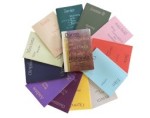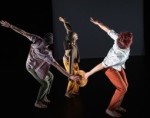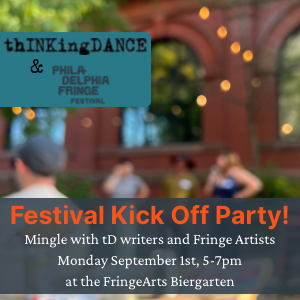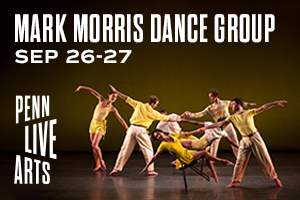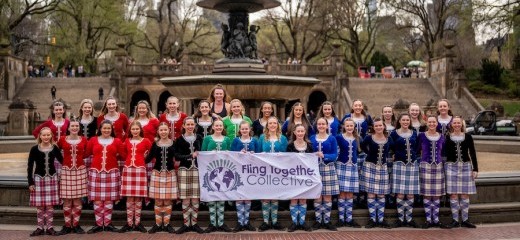
Flinging in the Rain
by Emilee Lord
I’m pressing through the busy and rain-soaked streets of Manhattan on a Saturday, getting myself over to 6th Ave between 44th and 55th Street. I’m on my way to the NYC Tartan Day Parade, an annual celebration of Scottish heritage and culture held each April 6th in honor of the Declaration of Arbroath. I can hear the pipes and drums from a block away. Bands from many clans and institutions in Scotland, the USA, and even one hailing from Shanghai, walk the parade. Some form Tattoos (not to be confused with ink), and all play a selection of songs I remember from a childhood spent around bagpipes and Highland games.
Beyond nostalgia, I’m here to see Fling Together Collective (FTC) partnered with Shot of Scotch NYC and the 60 dancers they had from all over the world, including the United States, Canada, Australia, New Zealand, and South Africa. I recently met one of FTC’s competitive dancers and she impressed me with her passion and dedication to the form. Curious about Highland dance, I took the plunge, started researching, and emailed back and forth with dancer Heather McCabe and FTC’s dancer and event administrator, Ciara Santiago, after the parade.
“Fling Together Collective is a registered 501(c)(3) nonprofit dedicated to promoting Highland dance through accessible education, scholarships, and cultural exchange. Originally launched during the 2020 pandemic… it has since grown into a vibrant organization fostering global collaboration through workshops, video projects, and performance opportunities—continuing to support the Highland dance community with innovative programs and financial assistance,” Santiago explains.
Of Highland dance, McCabe says, “I became hooked. I loved the mix of being expressive and also having to be regimented and very precise at the same time. There were such concrete goals to shoot for in learning each specific dance.” McCabe is a bit of an anomaly. She came to Highland dance well into adulthood and didn’t compete immediately. She said it takes a real sense of humor to compete onstage alongside dancers decades younger.
Highland dance, since the 1900s, has been a competitive and visible part of the Highland Games. I remember watching it as a kid, but I didn’t yet grasp the precision, strength, or stamina the form demands. Back then, I was mesmerized by the bright, leaping colors of the Tartans more than by the very clean and specific set of movements. It wasn’t until this year's parade, and the conversations that followed, that I finally saw the form’s clarity and expressive power. To be fair, I also liked watching square dancing as a kid, but mainly for the swishing and flying of the dancers' full skirts. Now, maybe less enamored of flashy costuming, I see the steps.
There are four main traditional dances: the Highland Fling, Sword Dance (Ghillie Callum), Seann Triubhas/Old Trousers (pronounced: shawn trews), and the Reels. The Fling is thought to be the oldest of the dances and is a victory-in-battle dance originally danced by warriors on their shields. The history of Highland dance is long and complex. Santiago shared that, “With ancient roots, this traditional Scottish art form dates back centuries with some references linking the Sword Dance to events as early as 77 AD. While documentation is limited, oral histories suggest that balletic influences may have entered Highland dance as early as the Norman invasion of England in the 11th century.” Originally performed only by men, Highland dance gradually evolved into its current formalized structure during the 1950s.
In the parade, I see a fusion of traditional and contemporary Highland steps. According to McCabe, “It wasn’t one specific dance. Choreography like that is typical in performance settings and sometimes in competitions where choreography is one of the categories.” And from Santiago, “Similar to ballet, Highland dancing is based on a finite number of fundamental movements and positions. Our parade choreography, by Alexa Smith and Kate DeGood, featured a combination of these movements with a bit of a modern flair. It can’t be said that the steps came from the Fling, strictly speaking, but there were some arm positions and footwork which may be seen in the Fling and the other traditional dances.” Santiago notes that “being one of the 61 dancers in this year’s team was truly an unforgettable experience. Highland dancing, particularly in its competitive form, is traditionally a solo pursuit. Having the chance to perform as part of a team alongside talented dancers from around the world was a rare and cherished opportunity.”
The choreography shows a set of leaping, air-filled steps. Dancers’ sharp angles and lines in the legs and high-flying arm shapes, some sources say, mimic the stag's antlers. The form has constant weightless leaps off the ground and toe taps or points. The dancers, in formation, move in unison to the pipe music, making an incredibly aerobic routine appear effortless. And bringing up the rear are the tiniest members of the collective. While these little ones’ steps aren’t always precise, their gleeful bounds and twirls make up for it. They totally ignore the rainy chill in the excitement of the day and the cheering crowd under the bright lights of Radio City Music Hall.
“Ask any Highland dancer what they love about the art form,” Santiago says, “and you’ll get a wide range of answers. But at the heart of it all is the community.” The discipline, drive, focus, and care these dancers put into their training pay off. They float and frolic, spin, bounce, lift, gesture, tap, and fling. There is poise and symmetry and a delicate balancing of expression and control. I am smiling, laughing, clapping, cheering, rain-soaked, and loving every moment. And you know what? Forget what I said earlier; I will always be enamored of flashy costuming.
Fling Together Collective, NYC Tartan Day Parade, April 2025
Home Page Image Description: On the Avenue in front of the red sign above Radio City Music Hall, a group of Highland dancers are pictured landing out of a leap onto their right toes, the left leg bent at the knee out to the side, with the left foot touching the opposite leg just below the knee. They have their hands on their hips and broad, bright smiles. The brightly colored white and red, dark blue, light blue, purple, and green plaids of their Tartans and knee socks stand out on the cloudy day.
Article Page Image: Two rows of Highland dancers stand in front of the Bethesda Fountain at one of the entrances to Central Park in NYC. There are trees in the background. The dancers are clad in bright plaids and knee socks in orange, red, green, blue, and purple. A few in the first row hold a sign that says Fling Together Collective
By Emilee Lord
April 11, 2025


